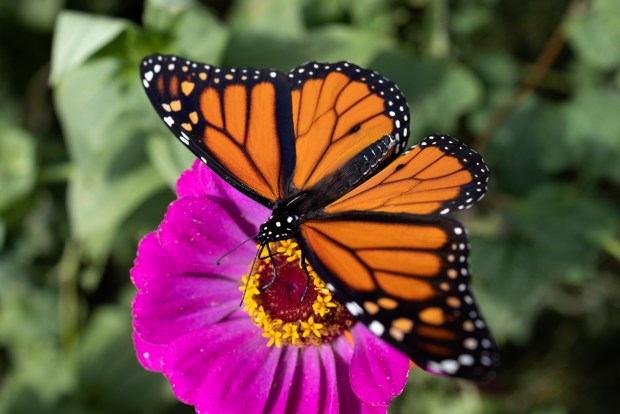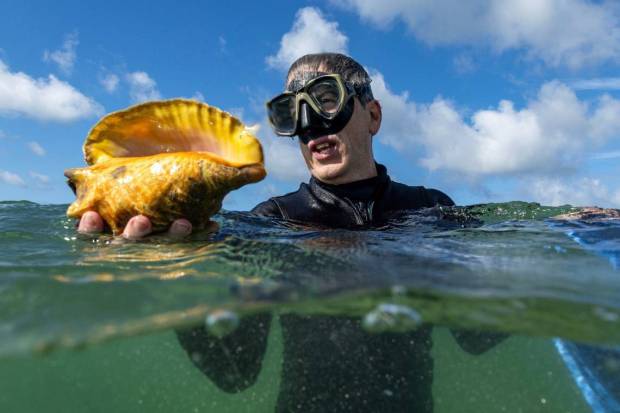American bald eagles need towering trees to raise young. Blanding’s turtles thrive in undisturbed freshwater habitats. Presidio manzanita, an evergreen shrub, requires unusual serpentine soils to grow. And the fragile monarch butterfly? It can lay its eggs on just one plant: milkweed.
Take away these natural resources, and these icons of America will go extinct.
For 50 years, the Endangered Species Act has provided bedrock legal protection for nature’s most vulnerable, including 1,684 plant and animal species native to the United States and the environments they call home.
This law is written to prohibit “harm” to species, which includes significantly changing the environments where they are found. Plainly, this holds people accountable for injuring, killing or impairing animals’ survival by destroying or polluting their ecosystem.
The current administration, which oversees the U.S. Fish and Wildlife Service and the National Oceanic and Atmospheric Administration, wants to change the definition of “harm” to remove habitat modifications. Narrowing the definition of “harm” to direct, physical injury to individual animals and plants ignores the undeniable truth: Without healthy habitats, there are no wild species.
Destroying habitats doesn’t just scar the landscape — it drives entire species toward extinction. Habitat loss remains the No. 1 cause of wildlife decline, and without the protections of the Endangered Species Act, chances are we would have already lost the California condor, humpback whale, Tennessee coneflower and more.
The rollback of the definition of “harm” isn’t just a policy change — it’s also an open invitation for destruction. It is a free pass for groups or individuals to tear through critical habitats with little accountability, all while pushing vulnerable plants and animals closer to extinction.
In 1975, only 13 Puerto Rican parrots remained due to habitat loss, pesticides and capture for the pet trade, which sparked a massive recovery and release effort. Scientists at Lincoln Park Zoo harnessed the power of genetics to help rebuild the population alongside conservation partners. Now, hundreds of parrots live in the wild — but their future is fragile. As cavity nesters, they rely on old, dead tees to breed. When these forests are logged, their future disappears. Without continued protection of their habitat, the zoo’s population models predict this iconic species will vanish within the lifetime of a child born today.
The queen conch is one of the most recent species to be listed under the Endangered Species Act. This marine snail is a critical protein source not just in the marine food web, but for humans too, many of whom support their families by fishing. But dredging, overfishing and other drastic, human-driven changes to the seafloor are endangering the survival of this slowly reproducing mollusk, which has witnessed incredible decline across Florida and the Caribbean. Shedd Aquarium has been studying conch behavior, movement and reproduction for years to inform government agencies on ways to reduce harm. Should the conch lose its federal protections, it will be harder than ever to change course for the population.
Mexican gray wolves, native to the Southwestern United States, were listed as endangered in 1973 due to human conflict and habitat loss. By the late 1970s, a recovery effort was launched to stave off extinction. Partners such as Brookfield Zoo Chicago began caring for the wolves and supporting reproduction in a protected environment. Their decline was so rapid, however, they became extinct in the wild. Today, thanks to recovery and reintroduction efforts, their wild population has rebounded to 257 wolves, with many reproducing in the wild. Without continued habitat protection, this fragile success may not last.
U.S. forest ecosystems support thousands of species and offer vital services such as air purification, water protection and defense against extreme weather. Despite their importance, we continue to lose critical forest cover in many regions, causing species extinction. At The Morton Arboretum’s Center for Species Survival for Trees, staffers work with collaborators around the country to protect, manage and restore critical forest ecosystems and the diverse tree species they harbor. By preventing harm to these habitats, dozens of other at-risk species benefit, many which have yet to be described by science, but whose loss could have severe consequences for the ecosystem’s health and capacity to adapt to changing conditions.
Five years ago, alula, a beautiful plant found only on coastal cliff habitats on Kauai and Niihau, Hawaii, was declared extinct in the wild. It survived only due to the foresight of conservation botanists who brought the species into cultivation and distributed seed to botanic gardens. When plants in Hawaii became unable to reproduce, scientists at Chicago Botanic Garden’s Negaunee Institute conducted a genetic study and determined the optimal crosses to make to restore lost genetic diversity to the Hawaiian collection. Today, genetically healthy individuals been reintroduced to their native habitat, but they rely on protected areas.

Chicago’s protectors of wildlife and wild places are joining hands and turning to the public. If you’ve ever made a meaningful memory in nature or shared a special connection with wildlife, we urge you to submit a comment to the U.S. Fish and Wildlife Service by Monday opposing this definition change in the Endangered Species Act.
Let decision-makers hear this loud and clear: Protecting wildlife means protecting ourselves. These habitats aren’t just vital to animals; they sustain human life, too. Gutting ecosystem protections doesn’t just risk extinction — it also unravels decades of progress, accelerates biodiversity collapse and strips future generations of the wild places we all cherish. What harms the planet, harms us all.
Megan Ross, Ph.D., is president and CEO of Lincoln Park Zoo. According to the author, this opinion piece is also supported by Lincoln Park Zoo, Shedd Aquarium, Brookfield Zoo Chicago, The Morton Arboretum and Chicago Botanic Garden.
Submit a letter, of no more than 400 words, to the editor here or email letters@chicagotribune.com.



